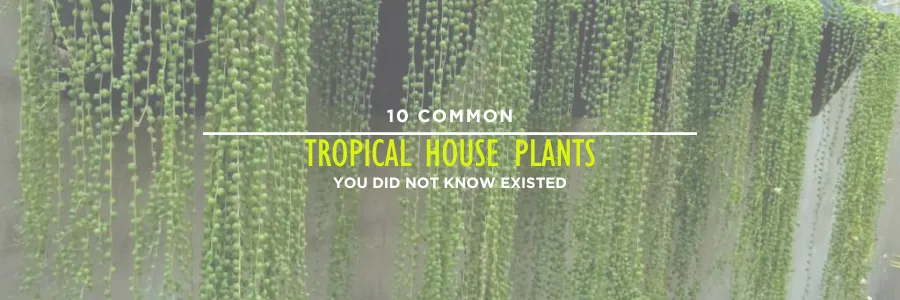Tropical house plants have long been a staple of indoor gardening, known for their lush foliage and vibrant colors. While some species like the Monstera and Fiddle Leaf Fig have gained immense popularity, there exists a treasure trove of lesser-known tropical plants that can add an exotic touch to your indoor oasis.
In this article, we’ll introduce you to 10 common tropical house plants you probably didn’t know existed.

10 Common Tropical House Plants
1. Calathea Orbifolia (Calathea Orbifolia)

With its striking round leaves and intricate silver patterns, the Calathea Orbifolia is a true gem among common tropical houseplants. Native to Bolivia, this plant thrives in low to medium light conditions, making it a perfect addition to any indoor space.
2. Rattlesnake Plant (Calathea Lancifolia)

Another member of the Calathea family, the Rattlesnake Plant, showcases elongated, lance-shaped leaves with distinctive patterns resembling a rattlesnake’s skin. This plant is known for its ability to purify the air and can thrive in moderate, indirect light. A great member of the common tropical house plants.
3. Peperomia Obtusifolia (Peperomia Obtusifolia)

The Peperomia Obtusifolia, also known as the Baby Rubber Plant, boasts thick, glossy leaves that have a rubbery texture. Native to the Caribbean and South America, this plant is easy to care for and can adapt to a variety of light conditions. Great addition to the common tropical house plants.
4. Alocasia Polly (Alocasia Amazonica)

Hailing from the rainforests of Southeast Asia, the Alocasia Polly, often called the African Mask Plant, features arrow-shaped leaves with prominent veins. It’s a dramatic plant that loves high humidity and bright, indirect light.
5. ZZ Plant (Zamioculcas Zamiifolia)

The ZZ Plant, one of the best common tropical house plants, native to Eastern Africa, is an incredibly resilient species with glossy, dark green leaves. It can tolerate low light conditions and infrequent watering, making it an excellent choice for beginner gardeners or those with a busy lifestyle.
6. Bird of Paradise (Strelitzia Reginae)
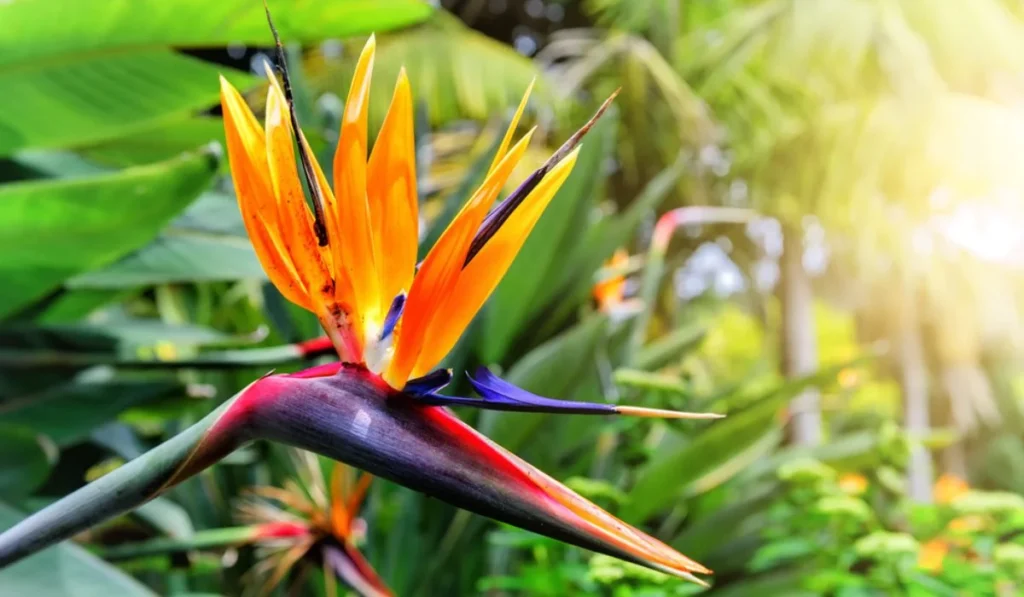
The Bird of Paradise plant is a tropical marvel, known for its large, banana-like leaves and vibrant orange and blue flowers that resemble a bird in flight. It’s native to South Africa and requires bright, indirect light to thrive indoors.
7. String of Pearls (Senecio Rowleyanus)
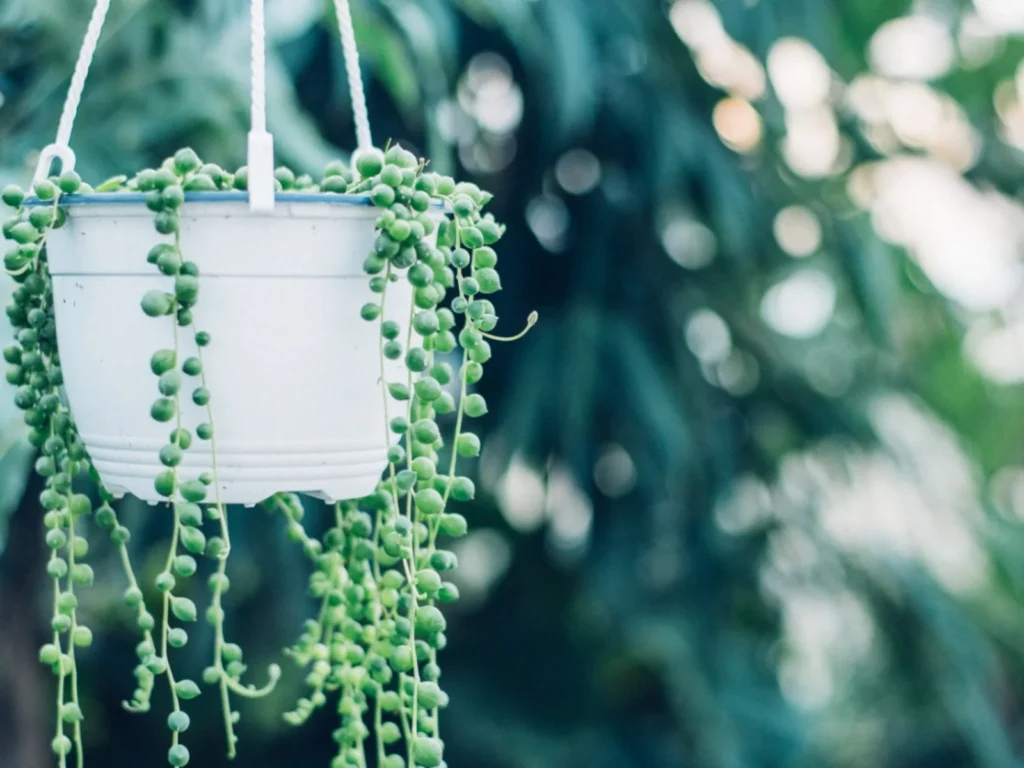
This unique succulent is sure to catch the eye with its cascading stems adorned with small, bead-like leaves. Native to South Africa, the String of Pearls prefers bright, indirect light and well-draining soil.
8. Rhipsalis (Rhipsalis Spp.)
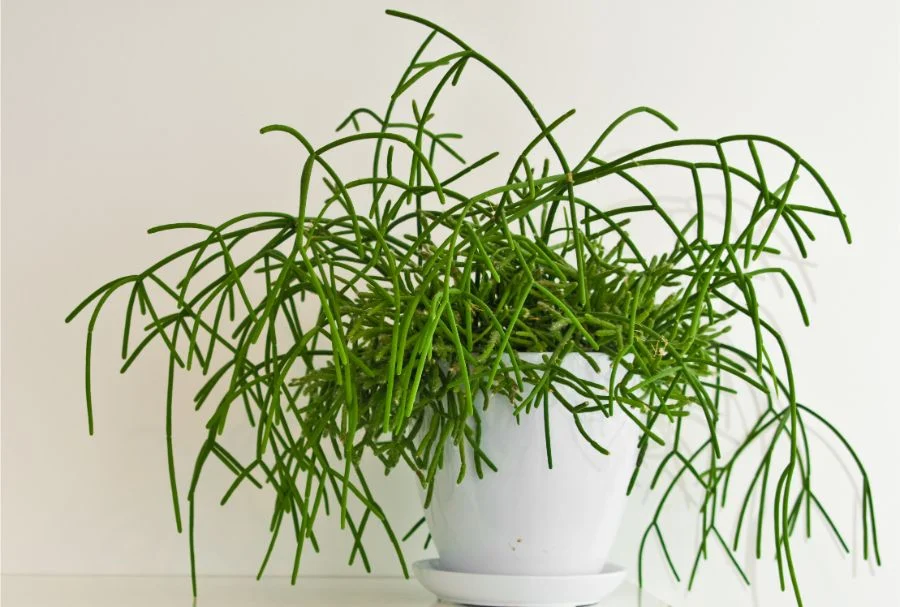
A genus of epiphytic cacti, Rhipsalis plants are well-suited for hanging pots. They have slender, trailing stems with fine hairs, giving them an ethereal appearance. They thrive in low light conditions, making them an excellent choice for rooms with limited natural light.
9. Bromeliad (Bromeliaceae Family)

Bromeliads one of the best common tropical house plants are a diverse group of plants known for their colorful, exotic foliage and unique flower spikes. They are epiphytes, meaning they can grow on other plants without causing harm. These plants hail from the tropical regions of the Americas and thrive in bright, indirect light.
10. Maranta (Maranta Leuconeura)
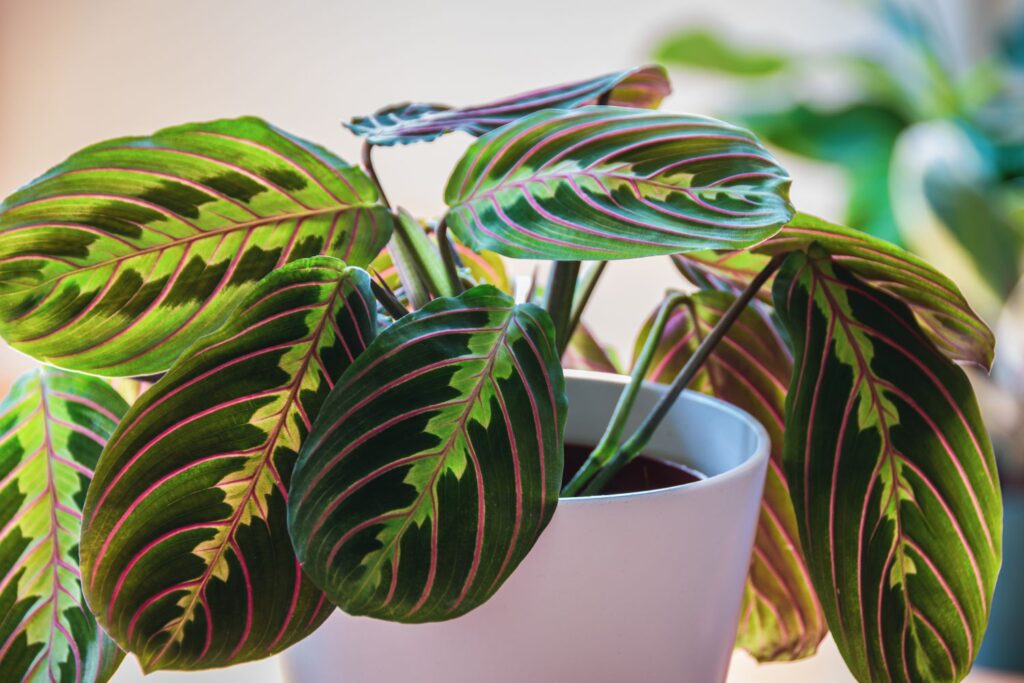
Also known as the Prayer Plant, the Maranta features stunning foliage with deep green leaves adorned with intricate patterns. At night, the leaves fold upward, resembling praying hands, giving it its name. This plant prefers low to medium light conditions and higher humidity levels.
Embracing the diversity of the common tropical house plants can bring a whole new level of richness to your indoor garden. With these lesser-known gems, you can create a lush and vibrant sanctuary right in your own home. Explore these plants and let them transform your living space into a tropical paradise. Happy gardening!
Factors to Keep in Mind When Gardening Common Tropical House Plants
| Factor | Consideration |
|---|---|
| Light Requirements | Assess the amount of natural light available in your space. Different plants have varying light needs (e.g., low, medium, or bright indirect light). Choose a plant that matches your lighting conditions. |
| Watering Frequency | Understand the specific watering needs of the plant. Some tropical plants prefer consistently moist soil, while others require periods of drying out between watering. Avoid overwatering, which can lead to root rot. |
| Humidity Levels | Tropical plants typically thrive in higher humidity. Consider using a humidifier or placing a tray of water near the plant to increase moisture levels. Frequent misting can also be beneficial. |
| Temperature Range | Check if the plant is sensitive to temperature fluctuations. Some tropical plants are more cold-sensitive and should be kept away from drafts or extreme temperature changes. |
| Pot Size and Drainage | Ensure the pot is appropriately sized for the plant and has adequate drainage holes. Good drainage prevents waterlogged soil, which can harm the plant’s roots. Consider repotting if the plant outgrows its container. |
| Soil Type | Use a well-draining, nutrient-rich potting mix suitable for tropical plants. Avoid using garden soil, as it may not provide the necessary aeration and drainage. |
| Fertilizing Schedule | Determine the plant’s feeding requirements. Some plants benefit from regular fertilization during the growing season, while others may have lower nutrient needs. Follow a balanced feeding regimen. |
| Pruning and Trimming | Understand the plant’s growth habits and pruning requirements. Regularly remove dead or yellowing leaves, and trim back any overgrown or unruly branches to promote healthy growth. |
| Pest and Disease Control | Keep an eye out for signs of pests (e.g., spider mites, aphids) and diseases (e.g., powdery mildew). Early detection and treatment are crucial in preventing infestations and maintaining plant health. |
| Pot Placement | Consider the plant’s native habitat and try to replicate similar conditions. Some plants may prefer higher or lower locations, while others may thrive in hanging baskets or on shelves. |
| Air Circulation | Ensure there is adequate air circulation around the plant. This helps prevent stagnant air, which can lead to mold and fungal issues. Use a fan if necessary. |
| Pet and Child Safety | Research if the plant is safe for pets and children. Some plants may be toxic if ingested. Keep them out of reach or opt for non-toxic alternatives if you have pets or small children. |
| Growth Rate and Size | Consider how large the plant is expected to grow and plan for adequate space. Some tropical plants can be quite prolific and may need regular pruning to maintain a manageable size. |
Benefits of Indoor Common Tropical House Plants
- Improved Air Quality: Many tropical house plants are excellent air purifiers. They help remove toxins such as formaldehyde, benzene, and xylene from the air, creating a healthier living environment.
- Enhanced Mood and Well-being: The presence of greenery has been linked to improved mental health and reduced stress levels. Tropical plants, with their lush foliage and vibrant colors, can uplift your mood and create a more positive atmosphere.
- Increased Humidity: Tropical plants release moisture into the air through a process called transpiration. This can help increase humidity levels in dry indoor environments, which is particularly beneficial for your respiratory system and skin.
- Boosted Productivity and Concentration: Studies have shown that having plants in your environment can enhance focus and productivity. This can be especially helpful in home offices or study spaces.
- Natural Decor Element: Tropical plants add a touch of natural beauty and elegance to any indoor space. Their diverse shapes, sizes, and textures can complement various interior design styles, making them versatile decorative elements.
- Noise Reduction: Some plants, like the Ficus, have dense foliage that can help absorb sound, reducing noise levels in your home.
- Improved Cognitive Function: Exposure to nature, even in the form of indoor plants, has been associated with improved cognitive function and memory retention.
- Regulation of Indoor Climate: Plants can help regulate indoor temperatures by providing natural shading and cooling effects. This can be particularly useful in hot climates.
- Encourages Responsibility and Routine: Caring for plants requires regular attention, which can instill a sense of responsibility and routine in your daily life.
- Natural Fragrance and Aromatherapy: Some tropical plants, like Lavender and Jasmine, release pleasant fragrances that can enhance the ambiance of your space and even promote relaxation.
- Educational and Therapeutic Benefits: Growing and nurturing plants can be a therapeutic and educational experience. It encourages learning about nature and provides a sense of accomplishment as you watch your plants thrive.
- Health Benefits: Interacting with plants has been shown to lower blood pressure and reduce feelings of anxiety. Additionally, caring for plants can promote physical activity and a sense of purpose.
Incorporating common tropical house plants into your indoor space not only beautifies your surroundings but also brings a multitude of physical and psychological benefits. Whether you’re a seasoned gardener or just starting out, these plants can enrich your life in numerous ways. So, go ahead, surround yourself with the lush greenery of the tropics, and enjoy the myriad advantages it offers!
Conclusion
Including common tropical house plants in your living space can be a delightful and rewarding endeavor. These vibrant additions not only beautify your surroundings but also bring a host of benefits, from improved air quality to enhanced well-being. By considering factors like light, water, and temperature, you’ll create an environment where your plants can thrive.
Remember, each plant has its own unique preferences, so a little research goes a long way in ensuring their health and vitality. Don’t be afraid to start with a plant that matches your lifestyle and the conditions in your home. With a bit of care and attention, you’ll soon find yourself surrounded by a lush oasis that not only brightens your space but also enriches your life.
Additionally, for those eager to explore further, some of the best house plants include classics like the Spider Plant, known for its air-purifying properties, and the Snake Plant, a hardy species that can thrive in low light conditions. The Peace Lily is another popular choice, boasting elegant white blooms and a knack for improving indoor air quality. These plants, like our tropical friends, can bring a touch of nature’s magic into your home. Happy home gardening!
Frequently Asked Questions
1. How often should I water my common tropical house plants?
The watering frequency for tropical house plants varies depending on the specific species and environmental conditions. It’s important to allow the top inch or so of the soil to dry out before watering again. Stick your finger into the soil to gauge moisture levels. During winter, when growth slows, reduce watering. Always ensure good drainage to prevent overwatering and root rot.
2. Can I keep common tropical house plants in low-light conditions?
Yes, some tropical plants are well-suited for low-light environments. Plants like the ZZ Plant and Snake Plant are known for their ability to thrive in minimal light. While they may not grow as quickly as they would in brighter conditions, they can still flourish. However, it’s important to note that even low-light plants benefit from occasional exposure to indirect sunlight.
3. How do I prevent pests on my common tropical house plants?
To prevent pests, regularly inspect your plants for signs of infestation such as discolored leaves, webbing, or small insects. Quarantine new plants for a few weeks before introducing them to your existing collection. If you detect pests, try natural remedies like neem oil or insecticidal soap. For severe cases, consider using a commercial insecticide. Additionally, maintaining good plant hygiene and avoiding overwatering can help deter pests.
Disclaimer: The images retrieved from Google Photos are for reference purposes only.
About the Author: Mary Jons (Content Writer) wrote and edited this article based on her knowledge and understanding. Mary comes with 5+ years of experience in academic research, and Home Decor content creation.

